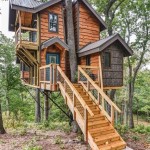Essential Aspects of Large Bat House Plans
As an advocate for environmental conservation and the well-being of wildlife, constructing a large bat house can be a rewarding project. By providing a safe and suitable habitat for these remarkable creatures, you can contribute to preserving their population and reaping the benefits they offer to our ecosystem.
Designing and building a large bat house requires careful consideration of several key aspects. Here is a comprehensive guide to help you create an effective and successful bat habitat:
1. Location and Placement
The location of your bat house is crucial for attracting and sustaining a colony. Choose a site that:
- Receives at least 6 hours of direct sunlight daily, preferably during the afternoon.
- Is at least 12 feet above the ground, providing a clear flight path for bats.
- Is facing south or southeast to maximize sunlight exposure.
- Is free from obstructions, such as trees or buildings, that can hinder bat movement.
2. Size and Design
The size of your bat house depends on the number of bats you want to attract. Large bat houses can accommodate 500 or more bats and typically have multiple chambers or compartments. Consider the following design features:
- Chamber Size: Each chamber should be approximately 14 inches high, 14 inches wide, and 24 inches deep.
- Entrance: Provide a 3/8-inch to 1/2-inch wide entrance slot at the bottom of each chamber, facing the flight path.
- Ventilation: Ensure proper air circulation by including small ventilation holes near the top of each chamber.
- Landing Area: Create a 3-inch wide landing platform below the entrance to facilitate bat access.
3. Materials and Construction
The materials used and the construction techniques employed are essential for the durability and effectiveness of the bat house. Choose materials that:
- Resist moisture and rot, such as cedar or redwood.
- Provide insulation, such as exterior-grade plywood or foam insulation.
- Are non-toxic and safe for bats.
4. Maintenance and Monitoring
Regular maintenance is crucial to ensure the long-term success of your bat house. Inspect the house annually for any damage, such as cracks or broken parts. Clean out guano (bat droppings) as needed to prevent disease transmission and maintain a healthy environment for the bats.
5. Patience and Perseverance
Attracting bats to your house can take time and patience. Bats typically seek new roosting sites in the spring and fall. Be patient and persistent in your efforts, and don't be discouraged if you do not see immediate results.
Conclusion
By following these essential aspects, you can create a large bat house that will provide a suitable habitat for these invaluable creatures. Remember to place the house in an appropriate location, design it with their needs in mind, use durable materials, maintain it regularly, and be patient in attracting bats. Your efforts will be rewarded by the beneficial presence of these fascinating and environmentally important animals.

Bat Houses Mass Gov
Bat House Plan

20 Diy Bat House Plans Insteading

20 Diy Bat House Plans Insteading

Bats

Modèles Et Plans De Dortoirs Neighbourhood Bat Watch

20 Diy Bat House Plans Insteading

Bat Houses Denman Conservancy Association

How To Build A Bat Box The Wildlife Trusts
Building A Bat House








